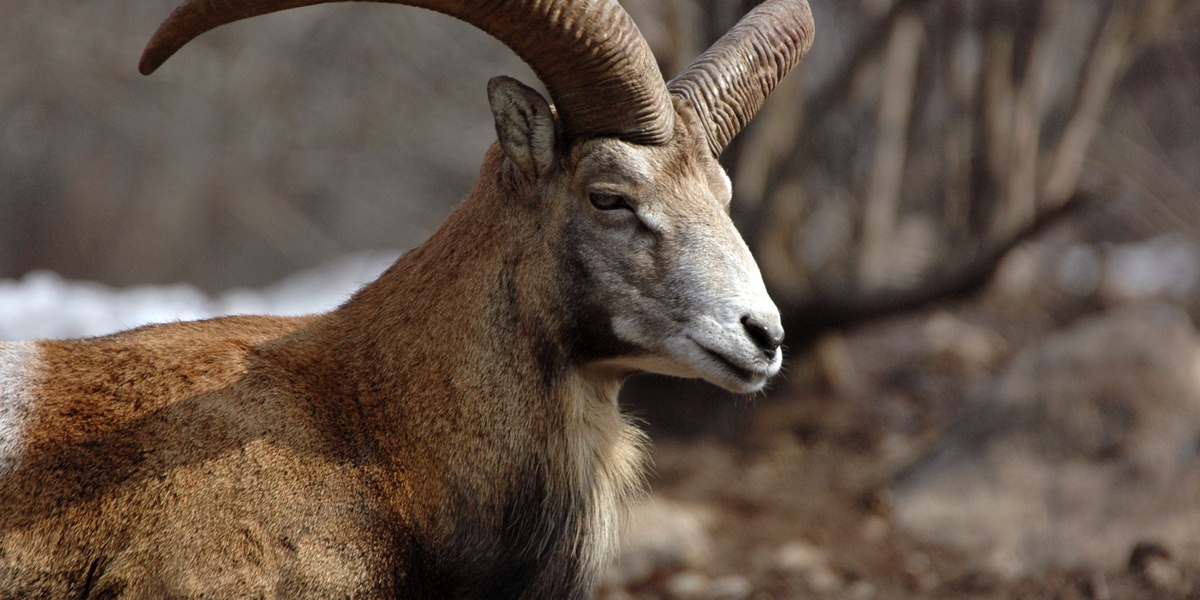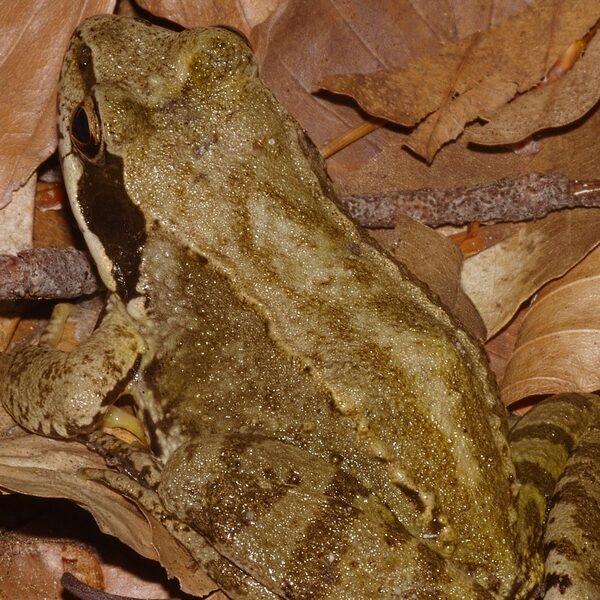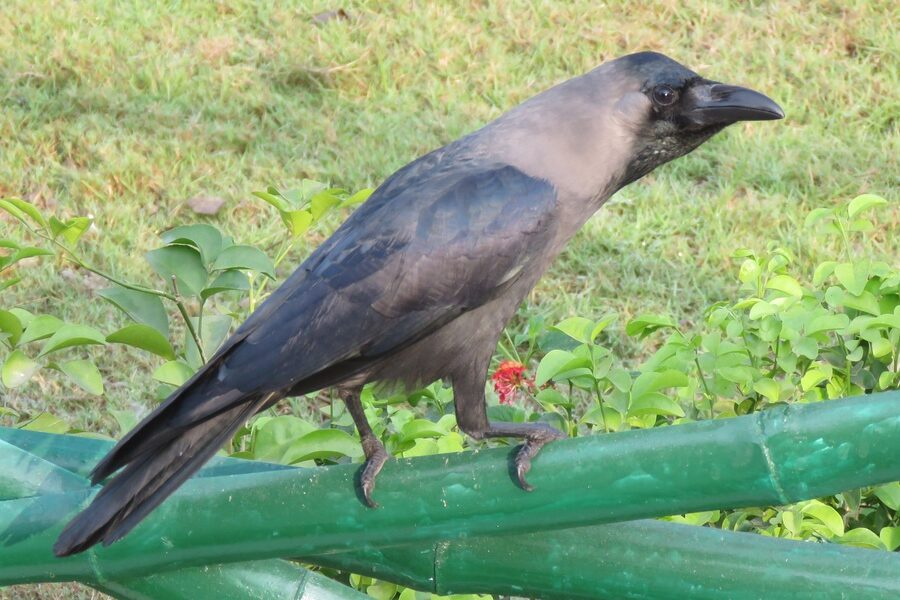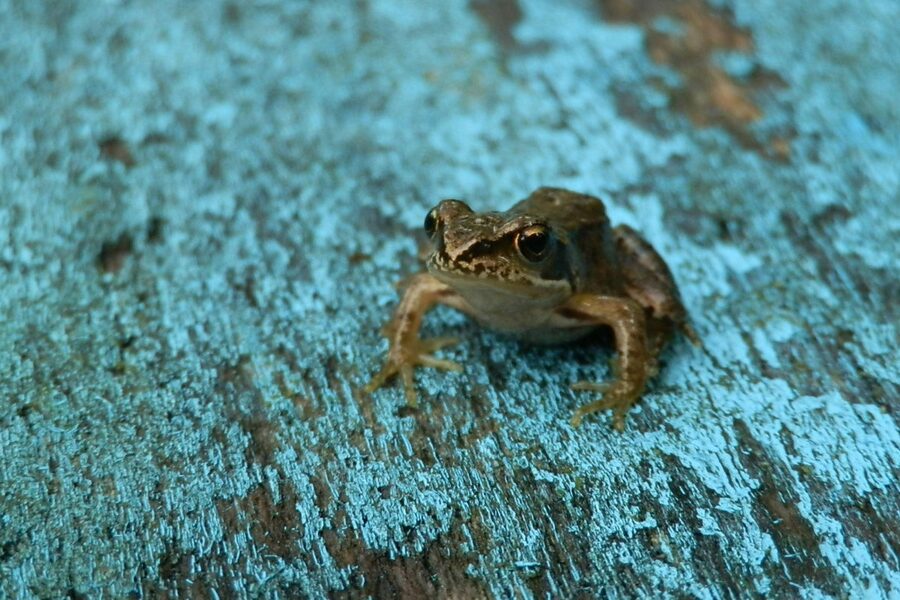Armenia’s varied landscapes — from high mountains and alpine meadows to river valleys and semi-desert slopes — support a surprising range of wildlife. Local traditions, protected areas and seasonal migrations all shape which species you’ll encounter and where to look for them.
There are 52 Animals of Armenia, ranging from the Apollo butterfly to the Wild boar. For each species you’ll find below Scientific name, Habitat & range (Armenia), Conservation status, so you can quickly see where a species lives and how threatened it is — you’ll find those details below.
How can I use this list to spot wildlife in Armenia?
Look up a species’ Habitat & range (Armenia) first to target the right ecosystem and season (many birds and butterflies are migratory). Visit protected areas and ask rangers about recent sightings; early morning and late afternoon are often best. Bring binoculars, stay quiet, and respect distance to avoid disturbing animals.
Which species on the list need the most conservation attention?
Check the Conservation status column for species listed as Vulnerable, Endangered, or Critically Endangered; those are priorities. Many at-risk animals depend on shrinking habitats or face poaching and require habitat protection, monitoring, and local conservation programs to improve their outlook.
Animals of Armenia
| Name | Scientific name | Habitat & range (Armenia) | Conservation status |
|---|---|---|---|
| Brown bear | Ursus arctos | Mountain forests and alpine meadows (Lori, Tavush, Syunik) | Least Concern |
| Eurasian lynx | Lynx lynx | Dense forests and subalpine zones (Lori, Tavush, Syunik, Aragatsotn) | Least Concern |
| Grey wolf | Canis lupus | Open woodlands, steppe and mountain valleys (Aragatsotn, Tavush, Syunik, Shirak) | Least Concern |
| Golden jackal | Canis aureus | Farmland, scrub and low-elevation woodlands (Ararat, Armavir, Kotayk) | Least Concern |
| Red fox | Vulpes vulpes | Widespread: forests, steppes, foothills, urban edges (nationwide) | Least Concern |
| Bezoar ibex | Capra aegagrus | Rocky cliffs and alpine slopes (Syunik, Vayots Dzor, Zangezur range) | Vulnerable |
| Caucasian mouflon | Ovis gmelini | Dry foothills and rocky scrub (Aragatsotn, Shirak, Syunik) | Vulnerable |
| Caucasian chamois | Rupicapra rupicapra | Alpine and subalpine cliffs (Aragatsotn, Lori, Syunik) | Least Concern |
| Wild boar | Sus scrofa | Forests, scrub and floodplain woodlands (Lori, Tavush, Gegharkunik) | Least Concern |
| Roe deer | Capreolus capreolus | Deciduous forests and forest edges (Lori, Tavush, Kotayk) | Least Concern |
| Red deer | Cervus elaphus | Large mixed forests and mountain valleys (Lori, Tavush, Syunik) | Least Concern |
| Eurasian otter | Lutra lutra | Rivers, lakeshores and wetlands (Arax, Debed, Lake Sevan tributaries) | Near Threatened |
| Brown hare | Lepus europaeus | Open fields, steppe and scrub (Ararat, Armavir, Shirak) | Least Concern |
| European mole | Talpa europaea | Meadows, orchards and forest soils (lowlands and foothills) | Least Concern |
| Common pipistrelle | Pipistrellus pipistrellus | Woodland edges, towns and caves (nationwide) | Least Concern |
| Caucasian squirrel | Sciurus anomalus | Oak and mixed woodlands (Lori, Tavush, Kotayk) | Least Concern |
| Armenian gull | Larus armenicus | Lakes, reservoirs and wetlands (Lake Sevan, Ararat plain) | Least Concern |
| Dalmatian pelican | Pelecanus crispus | Large lakes and wetlands (Lake Sevan, Kura valley wetlands) | Near Threatened |
| Great cormorant | Phalacrocorax carbo | Lakes, rivers and reservoirs (Lake Sevan, Araks River) | Least Concern |
| Great crested grebe | Podiceps cristatus | Freshwater lakes and large reservoirs (Lake Sevan) | Least Concern |
| Ferruginous duck | Aythya nyroca | Freshwater marshes and lakes (Lake Sevan, wetlands) | Near Threatened |
| White-tailed eagle | Haliaeetus albicilla | Large lakes, rivers and reservoirs (Lake Sevan, Araks valley) | Least Concern |
| Golden eagle | Aquila chrysaetos | Open mountains, cliffs and high plateaus (Aragatsotn, Syunik) | Least Concern |
| Bearded vulture (lammergeier) | Gypaetus barbatus | High rocky crags and alpine zones (Syunik, Vayots Dzor) | Near Threatened |
| Griffon vulture | Gyps fulvus | Cliffs, open hills and mountain valleys (Syunik, Vayots Dzor) | Least Concern |
| Egyptian vulture | Neophron percnopterus | Open country, cliffs and river valleys (Ararat plain, Vayots Dzor) | Endangered |
| Peregrine falcon | Falco peregrinus | Cliffs, river gorges and urban areas (Aragatsotn, Tavush) | Least Concern |
| Common buzzard | Buteo buteo | Woodlands, agricultural landscapes and hills (nationwide) | Least Concern |
| Caucasian black grouse | Lyrurus mlokosiewiczi | Subalpine meadows and high mountain slopes (Lori, Aragatsotn) | Near Threatened |
| Eurasian hoopoe | Upupa epops | Open woodlands, orchards and steppes (Ararat, Armavir, Kotayk) | Least Concern |
| Common raven | Corvus corax | Mountains, cliffs, forests and towns (nationwide) | Least Concern |
| White stork | Ciconia ciconia | Wet meadows, farmland and river valleys (Ararat plain, Gegharkunik) | Least Concern |
| Common crane | Grus grus | Wetlands, marshes and river floodplains (Gegharkunik, Araks valley stopovers) | Least Concern |
| Common kingfisher | Alcedo atthis | Rivers, streams and lake shores (Debed, Hrazdan, Sevan tributaries) | Least Concern |
| Eurasian jay | Garrulus glandarius | Deciduous and mixed woodlands (Lori, Tavush, Kotayk) | Least Concern |
| Chukar partridge | Alectoris chukar | Rocky slopes, dry hills and agricultural foothills (Ararat, Vayots Dzor) | Least Concern |
| Spur-thighed tortoise | Testudo graeca | Dry scrub, rocky slopes and steppe (Ararat, Armavir, Vayots Dzor) | Near Threatened |
| European pond turtle | Emys orbicularis | Slow rivers, ponds and marshes (lowland wetlands, Gegharkunik tributaries) | Near Threatened |
| Caspian whipsnake | Dolichophis caspius | Open hills, steppe and light woodland (Ararat plain, Shirak) | Least Concern |
| Grass snake | Natrix natrix | Rivers, ponds, wetlands and damp meadows (Sevan valley, Araks) | Least Concern |
| Radde’s viper | Montivipera raddei | Rocky alpine and subalpine slopes (Aragatsotn, Vayots Dzor, Syunik) | Vulnerable |
| Caucasian agama | Paralaudakia caucasia | Rocky outcrops, stone walls and dry slopes (Aragatsotn, Shirak) | Least Concern |
| Common toad | Bufo bufo | Moist woodlands, gardens and breeding ponds (lowlands and foothills) | Least Concern |
| European green toad | Bufotes viridis | Steppe, irrigation ditches and seasonal pools (Ararat plain, Shirak) | Least Concern |
| Marsh frog | Pelophylax ridibundus | Freshwater marshes, lakeshores and slow rivers (Lake Sevan margins, wetlands) | Least Concern |
| Sevan trout | Salmo ischchan | Endemic to Lake Sevan and tributary streams (Gegharkunik) | Critically Endangered |
| Northern pike | Esox lucius | Freshwater lakes and slow rivers (Lake Sevan, reservoirs) | Least Concern |
| Common nase | Chondrostoma nasus | Rivers and fast-flowing streams of the Kura-Arax basin (Debed, Araks) | Least Concern |
| Old World swallowtail | Papilio machaon | Meadows, alpine flower-rich slopes and gardens (highlands and lowlands) | Least Concern |
| Praying mantis | Mantis religiosa | Warm open habitats, gardens and meadows (Ararat plain, Kotayk) | Least Concern |
| Apollo butterfly | Parnassius apollo | Alpine and subalpine meadows, rocky slopes (Aragatsotn, Lori) | Vulnerable |
| European honeybee | Apis mellifera | Meadows, orchards and woodlands (nationwide; managed and wild) | Not Evaluated / common |
Images and Descriptions

Brown bear
Large omnivore of Armenian highlands; shy, mostly nocturnal. Look in remote forested slopes and alpine valleys in spring–autumn. Regionally important for ecosystem health; populations scattered and locally monitored.

Eurasian lynx
Solitary, secretive forest cat with tufted ears and long legs; hunts deer and hares. Best chance to detect signs (tracks, droppings) in remote mountain forests rather than visual encounters.
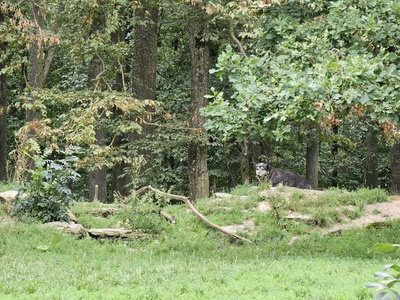
Grey wolf
Social, adaptable predator forming packs in remote areas. Wolves use mountain and lowland corridors; dawn and dusk are most active. Occasional livestock conflicts make them a conservation and management focus.
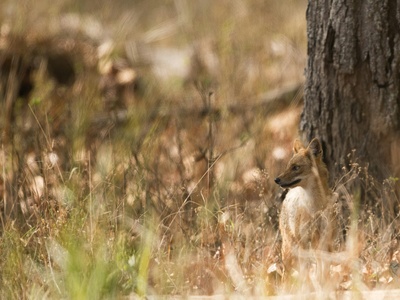
Golden jackal
Small flexible canid common across lowlands and agricultural landscapes. Often seen at dusk and dawn near villages and wetlands; scavenger and opportunistic hunter.
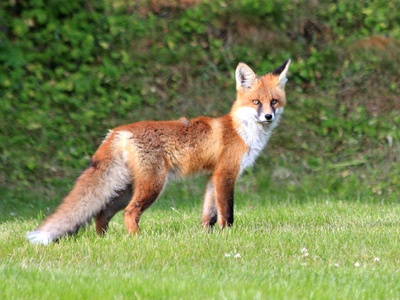
Red fox
Adaptable omnivore with reddish coat and bushy tail. Frequently seen near farms and towns, active at twilight. Clever and resilient, it thrives across Armenia’s varied habitats.

Bezoar ibex
Stocky wild goat with backward-curving horns; superb climber of steep cliffs. Best viewed in southern Zangezur and Vayots Dzor. Important quarry species historically, now conservation-managed.

Caucasian mouflon
Compact wild sheep with curled horns and reddish-brown coat. Occurs on rugged slopes and dry hills; watch for groups at dawn. Populations reduced historically, locally protected.

Caucasian chamois
Agile mountain ungulate with short hooked horns, favors steep rocky terrain. Seen in high summer and autumn grazing areas; expert climber visible from mountain tracks.
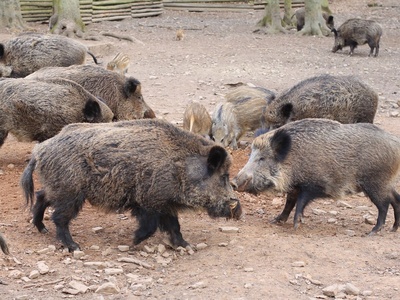
Wild boar
Omnivorous and nocturnal, wild boar root in forest floors and wetlands. Signs like wallows and tracks common; populations can increase rapidly where hunting pressure is low.

Roe deer
Small, elegant deer often glimpsed at dawn or dusk. Prefers mixed woodlands and hedgerows; quiet observation near forest edges can yield sightings, especially in spring.
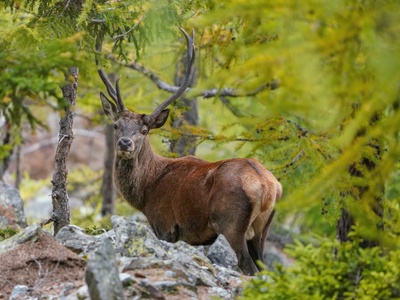
Red deer
Impressive antlered deer present in larger, remote forests. Rut in autumn offers best chance to hear calls; habitat fragmentation restricts some local populations.

Eurasian otter
Semi-aquatic, sleek predator often seen at dusk or dawn. Tracks, slides and fish remains indicate presence; healthy streams and wetlands are essential to their survival.
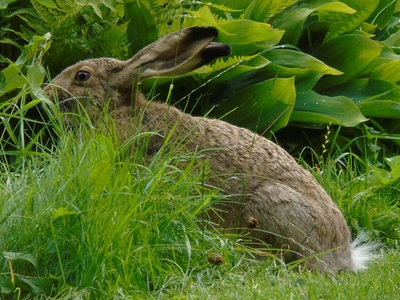
Brown hare
Fast, long-eared lagomorph common in lowland farmland and steppe. Most active at dusk and dawn; look for them in open agricultural areas and steppe margins.

European mole
Burrowing insectivore that leaves characteristic molehills in soft soils. Mostly subterranean and rarely seen; presence indicated by surface mounds in gardens and meadows.
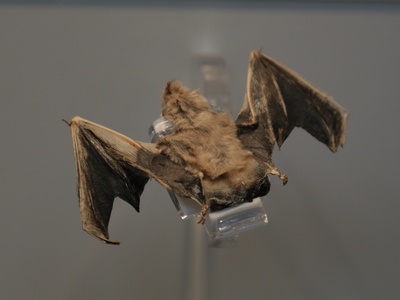
Common pipistrelle
Small, agile insectivorous bat roosting in buildings and tree holes. Active at dusk; excellent for insect control. Watch for feeding flights over water or streetlights.

Caucasian squirrel
Tree-dwelling squirrel with a bushy tail and reddish-brown coat. Agile and noisy, found in mature oak and beech forests; easiest to spot in daylight when feeding on seeds and fruits.

Armenian gull
Medium-sized gull common at Sevan and lowland reservoirs. Pale head in winter and distinctive call. Best observed along beaches and shallow bays during migration and breeding.
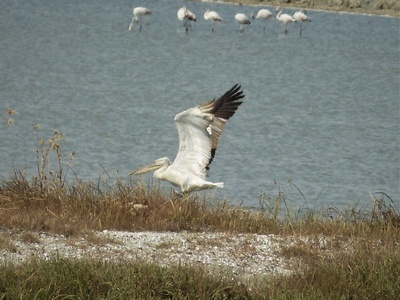
Dalmatian pelican
Huge white pelican with expansive wingspan and throat pouch; feeds in shallow waters. Seasonal visitor and occasional breeder; visible at Lake Sevan in migration and winter.

Great cormorant
Dark, fish-eating waterbird often perched to dry wings. Common on Sevan and river systems; easy to spot fishing from shallow water and rocky shores.
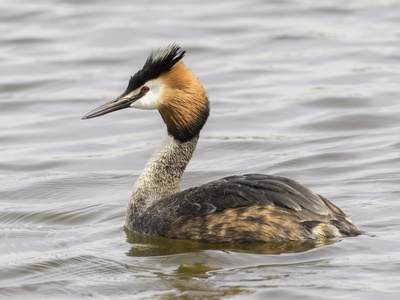
Great crested grebe
Elegant diving bird with ornate head plumage in breeding season. Seen on open water; displays and nest-assemblies occur on sheltered bays of Sevan and larger lakes.
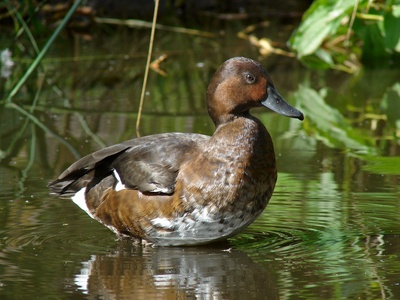
Ferruginous duck
Small diving duck with dark chestnut body and a white undertail. Prefers reed-fringed lakes and marshes; seasonal visitor and breeding species in suitable wetlands.
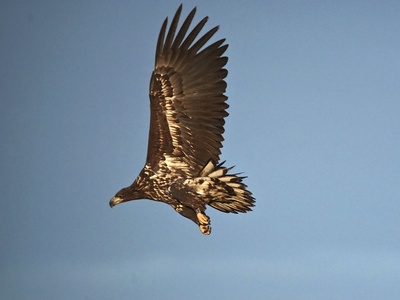
White-tailed eagle
Powerful fish-eating raptor with broad wings and pale tail. Scans large water bodies for fish and carrion; most visible in colder months when fish are scarce.
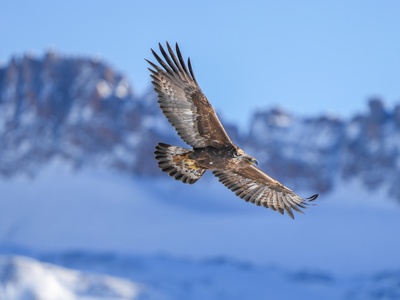
Golden eagle
Large, solitary raptor that hunts mammals and birds in open highlands. Look from ridgelines or passes; often soars on thermal currents above alpine meadows.

Bearded vulture (lammergeier)
Striking cliff-dwelling scavenger that drops bones to access marrow. Best seen circling high gorges and peaks; a conservation flagship species in Armenia’s highlands.
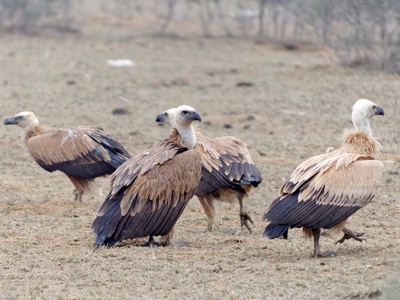
Griffon vulture
Large, social scavenger often in groups over valleys and sheep pastures. Feeds on carcasses and uses cliff ledges for nesting; seasonal movements follow food availability.
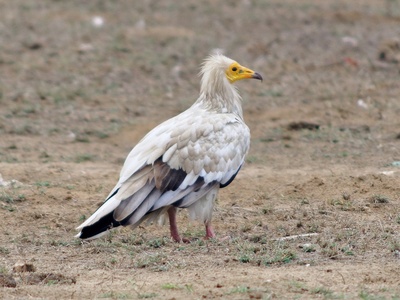
Egyptian vulture
Small, white vulture with wedge-shaped tail known for tool use. Scattered breeder and migrant; declines make it a high-priority conservation species in Armenia.
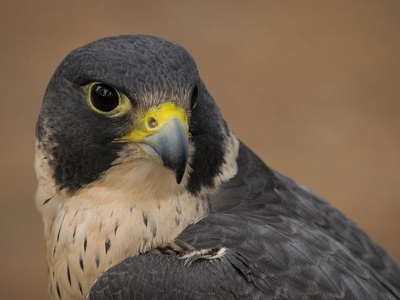
Peregrine falcon
World’s fastest bird in a stoop, preying on other birds. Nests on cliffs and tall structures; best sightings at open valleys and coastal-like reservoirs where prey concentrates.

Common buzzard
Widespread, medium-sized raptor often seen perched or soaring. Flexible diet and habitat tolerance make it a frequent sight throughout Armenia year-round.
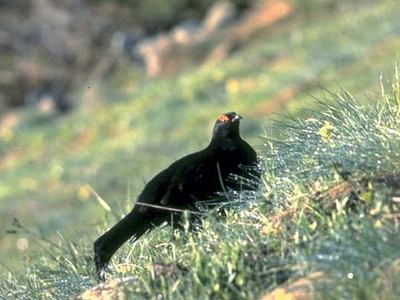
Caucasian black grouse
Ground-dwelling gamebird of high meadows; males display in spring leks. Elusive but audible at dawn; populations sensitive to habitat change and grazing pressure.
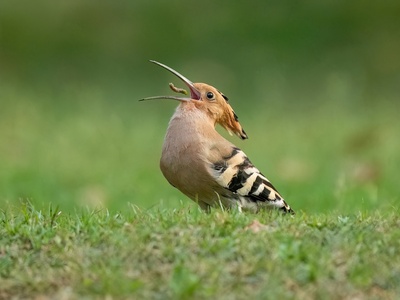
Eurasian hoopoe
Distinctive long‑crested bird with black-and-white wings and curved bill. Feeds on insects in open ground; often seen in orchards and village outskirts during summer.

Common raven
Large, intelligent corvid that thrives across Armenia. Frequently encountered around cliffs, settlements, and highlands; vocal and opportunistic feeder.

White stork
Tall migratory wader often nesting on poles and chimneys. Breeds in lowland wetlands and agricultural areas; impressive flocks during migration periods.

Common crane
Elegant long‑legged migrant using wetlands as stopover and wintering sites. Large, noisy flocks visible in migration; best seen at wetland roosts during spring and autumn.
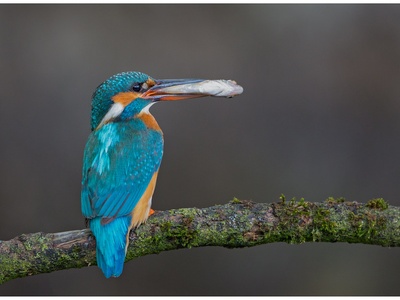
Common kingfisher
Small, dazzling blue-and-orange bird that dives for fish from perches. Secretive but visible along clear water courses; best spotted early morning and late afternoon.
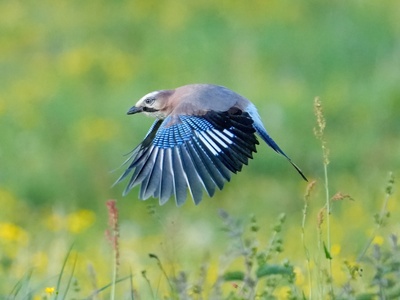
Eurasian jay
Colorful corvid with pinkish body and blue wing patches. Vocal and active in forests; often seen caching acorns and calling loudly in spring.
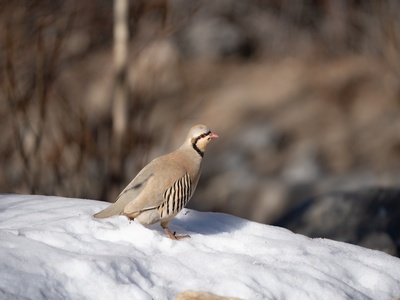
Chukar partridge
Stocky gamebird with barred flanks and a loud call. Prefers dry, rocky terrain and terraces; commonly seen flushed from bushes at dawn.
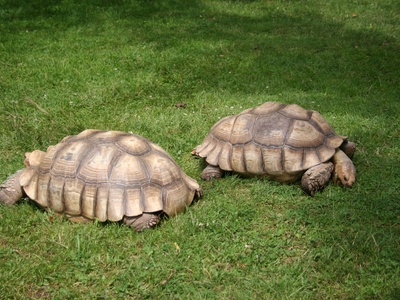
Spur-thighed tortoise
Terrestrial tortoise common in warm lowlands and foothills. Diurnal herbivore often seen basking on rocks; threatened locally by habitat loss and collection.
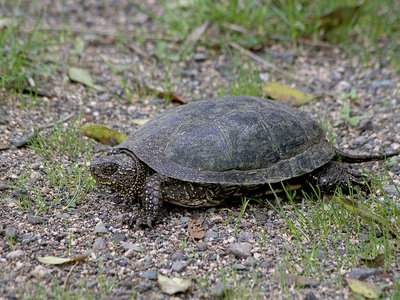
European pond turtle
Freshwater turtle often basking at water edges. Prefers vegetated shallows and reedbeds; local populations sensitive to wetland drainage and pollution.
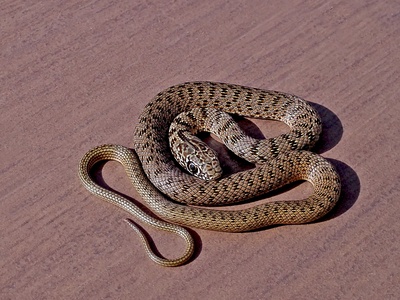
Caspian whipsnake
Large, fast-moving nonvenomous snake frequenting sunny slopes and stone walls. Often seen hunting rodents in open terrain; shy and avoids humans.
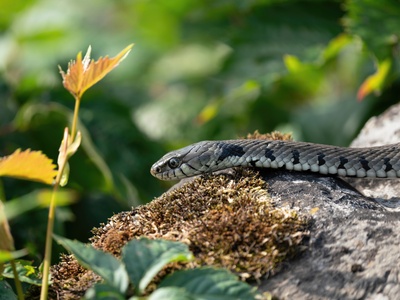
Grass snake
Nonvenomous, water-associated snake with characteristic collar. Active near water hunting amphibians; often observed basking on shores and low vegetation.
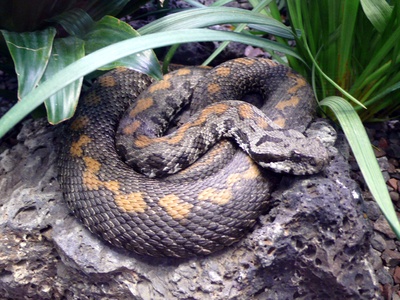
Radde’s viper
Relatively small, venomous viper confined to rocky mountain habitats. Cryptic and camouflaged; hikers should be cautious in sun-warmed scree and talus areas during warmer months.
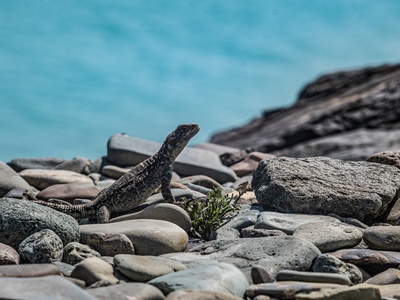
Caucasian agama
Robust lizard often seen basking on rocks and walls. Tolerant of dry, open habitats; easy to observe in sunlit mountain foothills and terraces.
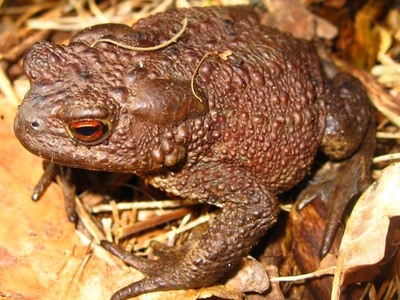
Common toad
Large, warty amphibian active at night and during breeding migrations to ponds. Widespread and familiar; listen for breeding choruses in spring wetlands and ponds.
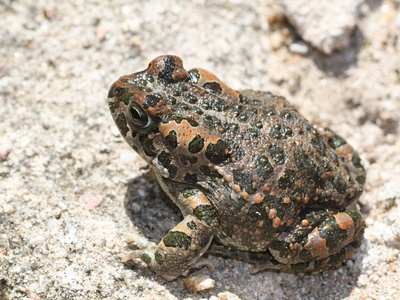
European green toad
Stocky toad with green blotches; tolerant of arid habitats and human-altered landscapes. Breeds in temporary pools after rains—best heard and seen during spring rains.

Marsh frog
Large greenish frog common in reeds and shallow water. Vocal choruses in spring make them easy to detect; important component of wetland food webs.

Sevan trout
A unique trout species endemic to Lake Sevan, historically vital for local fisheries. Now critically endangered due to habitat change, overfishing and introduced competitors; conservation and reintroduction efforts ongoing.
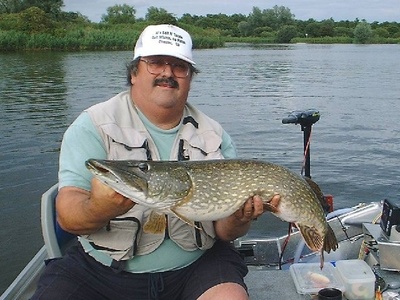
Northern pike
Ambush predator with elongated body and toothy jaws. Common in cooler freshwater habitats, hides among submerged vegetation and hunts fish—visible in clear shallow bays.

Common nase
Silvery, streamlined cyprinid found in flowing rivers. Prefers gravelly substrates and used as an indicator of river health; observed in main river channels.

Old World swallowtail
Large, colorful butterfly with distinctive tail-like wing extensions. Flies in flower-rich habitats from lowlands to high mountain meadows; popular with butterfly watchers in summer.

Praying mantis
Striking predatory insect with raptorial forelegs and triangular head. Ambushes insects on flowers and shrubs; visible in warm months and appreciated by gardeners.

Apollo butterfly
Elegant white butterfly with black and red eye spots, inhabiting high mountain meadows. Localized and sensitive to grazing and habitat loss; a prized sight for mountain naturalists.

European honeybee
Familiar pollinator present as managed hives and feral colonies. Vital for crop pollination and wild flora. Observed throughout Armenia in spring and summer among flowering plants.
